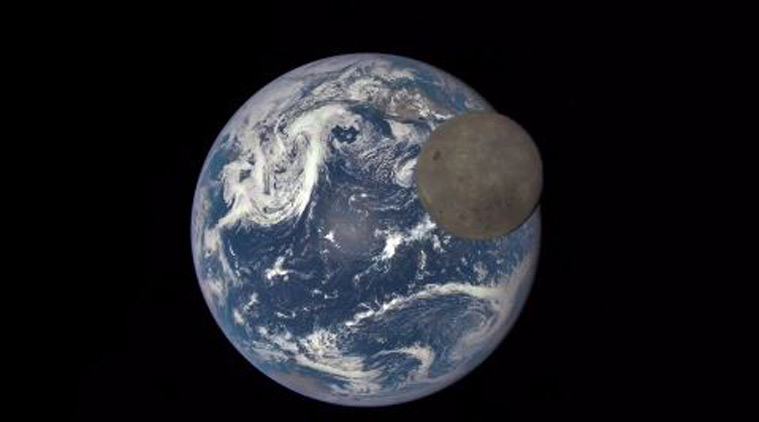The Dark Side of the Moon
In 2008, the Deep Impact spacecraft captured a similar view of Earth and Moon, but from 31 million miles away, and showing the Moon passing in front of Earth.
 The Dark Side of the Moon Or, what a NASA camera saw from a million miles away in space.
The Dark Side of the Moon Or, what a NASA camera saw from a million miles away in space.
Polychromatic Imaging Camera (EPIC) on board the Deep Space Climate Observatory (DSCOVR) satellite show the fully illuminated “dark side” of the Moon that is never visible from Earth.
DSCOVR was orbiting 1 million miles away from Earth when it took the pictures, between 3.50 pm and 8.45 pm Eastern Daylight Time on July 16 [between 1.20 am and 6.15 am IST on July 17], as the Moon moved across the fully sunlit face of the Earth.
WATCH VIDEO:
Pretty incredible time lapse of the dark side of the moon passing Earth from @NASA. American ingenuity at work! pic.twitter.com/JKep9bcxGQ
— President Obama (@POTUS) August 5, 2015
The far side of the moon was not seen until 1959 when the Soviet Luna 3 spacecraft returned the first images. Since then, several NASA missions have imaged the lunar far side in great detail.
EPIC, which keeps a constant eye on the fully illuminated Earth as it rotates, caught the Moon moving over the Pacific Ocean near North America. The North Pole is in the upper left corner of the image, reflecting the orbital tilt of Earth from the vantage point of the spacecraft.
EARTHBOUND observers always see the same side of the Moon, because the Moon is tidally locked to Earth. That means that its orbital period is the same as its rotation around its axis. The far (or “dark”) side of the moon was first seen in 1959, in images taken by the Soviet Luna 3 spacecraft.
NASA missions have subsequently imaged the lunar far side. In 2008, the Deep Impact spacecraft captured a similar view of Earth and Moon, but from 31 million miles away, and showing the Moon passing in front of Earth when it was only partially illuminated by the sun.
THE FAR SIDE of the Moon lacks the large, dark, basaltic plains, or maria, that are so prominent on the Earth-facing side. The largest far side features are Mare Moscoviense in the upper left and Tsiolkovskiy crater in the lower left. A thin sliver of shadowed area of moon is visible on its right side.
Image NASA, text adapted from NASA report
- 01
- 02
- 03
- 04
- 05






































